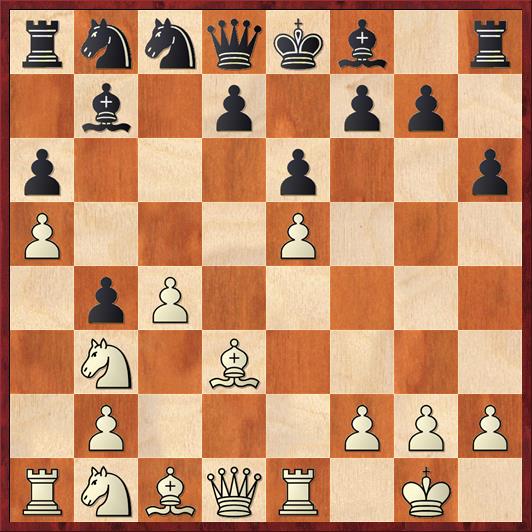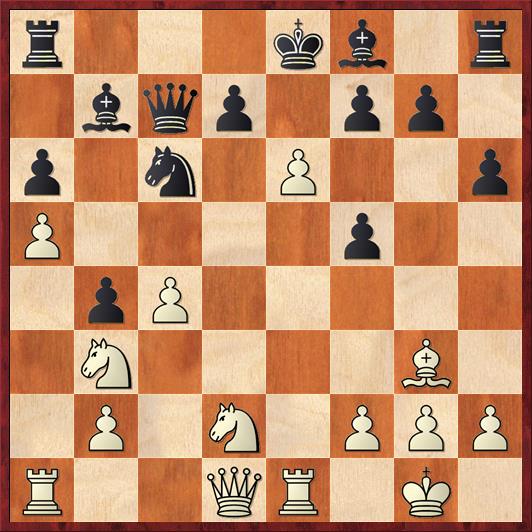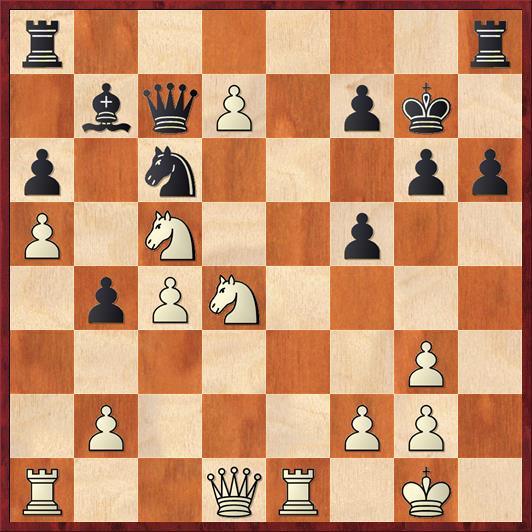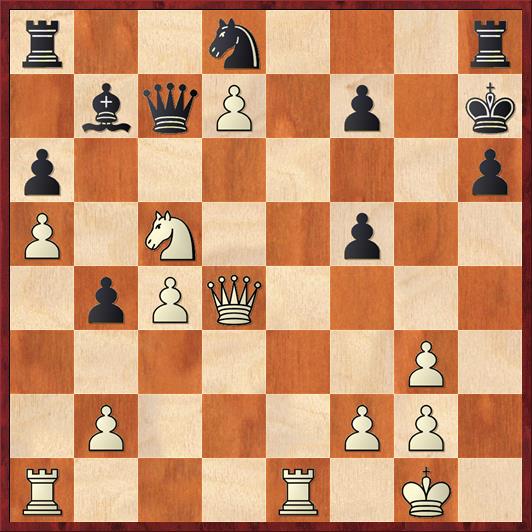I know this seems like a weird thing to say on May 1, but yesterday I played my first chess against a live human opponent in 2017. I’m not completely sure of this because I might have played a couple of blitz games back in January or February, but I have been so busy with my book that I just haven’t had time to play against anyone… except my computer. I’ve played way too many games against the silicon beast.
Anyway, if this was my first game of the year, it was a great if belated way to start the year. Gjon Feinstein and I got together yesterday for some speed chess (actually 7 minutes per game, so not-quite-speed chess). Usually he wins about 80 percent of our games, but yesterday I was still channeling all the great chess that I saw online at the Reykjavik Open. It was as if I asked, “Why can’t I play that way, too?” At least briefly, I did. I won the first two games before I reverted to form and he won the next three. (But they were all competitive.)
Obviously Gjon made some less-than-best moves in this game, but no really obvious blunders. The thing I really like about this game is the way that White’s pieces always seem to get to the right place just at the right moment. I much more often have the opposite experience — games where I’m always just a tempo too late. It’s nice to have one where the pieces were always just in the nick of time.
Dana–Gjon, 7-minute game
1. e4 e6 2. d4 a6 3. Bd3 b5 4. Nf3 Bb7
Gjon plays almost every opening in the book, but he always has some ideas behind whatever opening he plays. Here he isn’t just playing the Birmingham Defense for the hell of it; he’s actually been reading about it. Nevertheless, I feel as if he gets into trouble because his approach is just a bit too slow.
5. O-O Nf6 6. Re1 h6?!
Normal here is … Be7 or … d5. It seemed to me after 6. … h6 that Black has played one non-developing move too many, and White should therefore play ambitiously.
7. e5 Nd5
This knight embarks on a journey that is very familiar from the Alekhine’s Defense: Nf6-d5-b6-c8-e7-f5. But in the end, Black has very little to show for all these knight moves.
8. c3 c5
After the game we thought that 8. … d6 might have been an improvement for Black. But 8. … c5 certainly seemed natural at the time.
9. a4! cd 10. Nxd4 b4
I thought that this move was a pretty important concession, and now I feel as if White has a definite plus.
11. c4 Nb6 12. a5 Nc8 13. Nb3 …
 Position after 13. Nb3. Black to play.
Position after 13. Nb3. Black to play.
FEN: rnnqkb1r/1b1p1pp1/p3p2p/P3P3/1pP5/1N1B4/1P3PPP/RNBQR1K1 b kq – 0 13
I’d be interested to hear what my readers think about 13. Nb3. Even though it is an unforced retreat (or repositioning move), I really liked it because (a) it is flexible, and (b) it fights for the dark squares. Black’s KB cannot come to c5, and White has ideas of possibly playing c4-c5 himself, followed by Nd2-c4-b6 or d6. By comparison, if White plays 13. Bf4, 13. … Qh4 might be a little bit annoying. 13. Nb3 keeps my options open; I might play Bf4 or I might play f2-f4.
In the game the knight turned out to be a super-powerful piece, but that does not necessarily mean that 13. Nb3 was therefore correct.
13. … Nc6
Perhaps Black should try … d6 or … d5, even though it looks scary to open lines against his uncastled king. The problem is that in the game, Black gets a lifeless position with no chance of counterplay.
14. Bf4 Qc7 15. Bg3 N8e7 16. N1d2 Nf5?!
It’s hard to suggest anything better. The other alternative, 16. … O-O-O, gives white a pleasant choice between lines like 17. f4 (with the idea Bf2-b6) or 17. c5 (with the idea Nc4-d6+).
17. Bxf5 ef 18. e6! …
 Position after 18. e6. Black to move.
Position after 18. e6. Black to move.
FEN: r3kb1r/1bqp1pp1/p1n1P2p/P4p2/1pP5/1N4B1/1P1N1PPP/R2QR1K1 b kq – 0 18
Of course my 18th move came as no surprise to Gjon. The fact that he allowed it to happen shows just how desperate his position has become.
18. … Bd6
Not giving up just yet. The alternative try is 18. … f4, but Black can’t actually win White’s bishop. For example, 19. ed+ Kxd7 (or 19. … Kd8 20. Re8+ Kxd7 21. Rxa8 Bxa8 22. Qg4+) 20. Nf3+ Kc8 21. Re8+ Nd8 22. Bxf4.
19. ed+ Kf8 20. Nc5! …
As I said, this knight unexpectedly turns into a monster.
20. … Bxg3 21. hg g6
Black’s king needs luft, but real safety is impossible.
22. Nf3 Kg7 23. Nd4! …
 Position after 23. Nd4. Black to move.
Position after 23. Nd4. Black to move.
FEN: r6r/1bqP1pk1/p1n3pp/P1N2p2/1pPN4/6P1/1P3PP1/R2QR1K1 b – – 0 23
Another just-in-time move. White’s nasty threat is N(either)e6+, forking the king and queen, and Black can’t get out of it with 23. … Nxd4 because White’s pieces storm the castle after 24. Qxd4+ Kh7 25. Re7 Raf8 26. Ne6.
23. … Nd8
Once again Black is forced to retreat to the back rank and break the connection between his rooks. But how does White make progress from here?
24. Nxf5! …
Here I think my “Matrix chess” training against the computer actually helped. It teaches me to recognize the crucial moment to take my “time-out.” Although there are no time-outs here, I still felt that this was the crucial moment in the game, and I played this sacrifice partly on intuition.
24. … gf 25. Qd4+ Kh7
Also quite hopeless is 25. … Kg6 26. Qxh8 Qxc5 27. Re8.
 Position after 25. … Kh7. White to move.
Position after 25. … Kh7. White to move.
FEN: r2n3r/1bqP1p1k/p6p/P1N2p2/1pPQ4/6P1/1P3PP1/R3R1K1 w – – 0 26
The finish is pretty obvious, but nevertheless appealing.
26. Re8! Black resigns
White ends the game with another “just-in-time” move. Just like 23. Nd4, it’s kind of a sneaky-strong move, because at first it looks like just a trade of pieces, until you look a little closer and realize that Black has no way to accomplish the desired trade. He does not have time for 26. … Ne6 because of 27. Qxh8+.
Actually if I had been Black I would have played one more move: 26. … Rg8 would set up the threat of … Ne6 again. Now White would have to “find” the move 27. R1e1, inviting the last White piece to the party, and at this point Black could resign. The threat is Rxg8 followed by Re8+. After 27. R1e1, 27. … Ne6 would be met easily enough by 28. Nxe6, while 27. … Qc6 28. f3 Ne6 would run into 29. R1xe6!
White’s attack went just like clockwork. White plays natural developing moves and “building” moves, nothing spectacular, until the key moment when Black’s defenses are stretched to the breaking point. Then at the critical moment, a sacrifice transforms the position in such a way that Black’s beleaguered pieces are no longer in the right position to defend. If only chess were always so easy!
P.S. I have some non-chess news for anyone who is interested. My book The Universe in Zero Words has been short-listed for a book prize in Italy. It’s called the Premio Asimov, and presented by the Gran Sasso Scientific Institute. Out of five nominees, I am the only one who isn’t Italian!
This nomination came as a complete surprise to me. One thing that’s cool about it is that the award is determined by a vote of 1,400 high-school students. This seems somehow appropriate for a prize named after Isaac Asimov, one of the premier popularizers of science. The winner of the award will be announced on May 6.



{ 5 comments… read them below or add one }
I wasn’t aware of the published book so I immediately went to Amazon. The comment section was hilarious. Two maths got into a serious food fight over something called the Zeta function. The math on Dana’s side clinched the argument with a knockout punch: ” Define a meromorphic function f(z) on the entire complex plane that is not the same function as Zeta(z) and yet for which f(x) = Zeta(x) for all real x > 1.” Hell yes! I was about to say the same thing myself…
Thanks, Paul! This is pretty hilarious… what’s even scarier is that I know what the guy meant. But seriously, this also gives you an idea of the pitfalls of science writing. Whenever you write for the public, you *have* to explain things in a non-technical way and maybe fudge a couple of points, and there will always be self-appointed correctness police ready to pounce on you.
Re the Nb3 idea:
I first came across this idea about 45 years go, in Alekhine – Tarrasch Hastings 1922, and tried a few times to use the idea in my own games, without much success. Alekhine, in his notes, points out that he used the same idea in 1921 at the Hague versus both Maroczy and Rubenstein. In the game with Rubenstein, the follow up Nc5! was just as deadly as it was in your game.
So, for at lest one game, you were playing like Alekhine.
Thanks for the perceptive comment! I would never have made this connection. Your comment sent me back to the library to look at Alekhine’s _My Best Games_, a book I have unfortunately studied only in bits and pieces. In a different life, maybe I would have read it cover to cover instead of getting a doctorate in mathematics… But on the whole, I can’t complain about the life I’ve had.
Alekhine also introduced the idea of a Nd4-b3 retreat early on in the Accelerated Fianchetto in his game v. Saemisch in Vienna 1922: 1 e4 c5 2 Nf3 Nc6 3 d4 cxd4 4 Nxd4 g6 5 c4 Bg7 6 Nb3!? Retreating the knight at this point avoids the exchanges common in this line after 6 Be3 Nf6 7 Nc3 Ng4. The Nb3 later supported a c5 by White, and Alekhine won rather quickly in a tactical flourish despite an early trade of queens.
PS: Congrats on your book nomination!